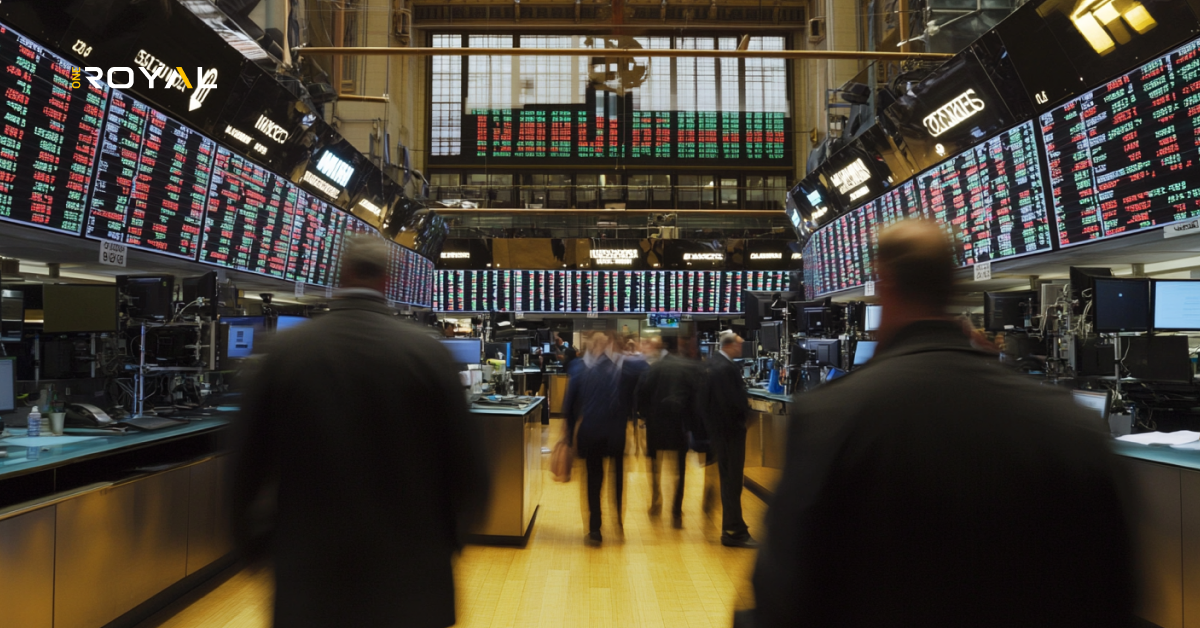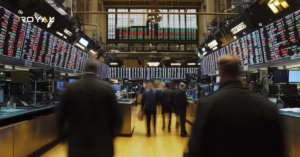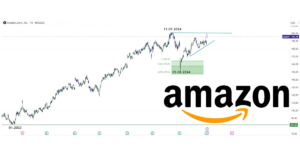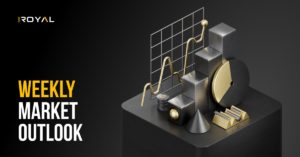The dollar is hovering at the highest level in 6 weeks.
The dollar hovered at the highest level six weeks before the announcement of economic data which may help determine the direction of interest rates in the future. At the same time, the euro fell ahead of the report of monthly data on corporate activity.
Solid US labor market data and the higher inflation data raised expectations of raising interest rates which supported the dollar’s rise this month. After a quiet Monday for the US Presidents’ Day holiday, the dollar traded at 134.65 yen, up 0.3%. It rose 0.2% against the euro at $1.0665.
The dollar index is heading towards recording an increase for the fourth week in a row and has risen 1.7% since the beginning of February. Still, it has settled at about 104, retreating from its highest level in six weeks, which it recorded on Friday at 104.67. The Australian dollar fell 0.5% to $0.6878, giving back some of the gains made the previous day. The British pound fell 0.3% against the dollar to $1.20065. But it did better against the euro and traded at 88.81 cents.
Gold is trading in a narrow range.
Gold rose slightly on Tuesday, February 21st, as it was confined to a narrow range. Investors refrained from forming prominent positions before releasing US economic data that may affect the Fed’s interest rate strategy. Gold rose 0.1% to $1842.37 an ounce at 02:45 GMT, while it is trading in a range of $4. US gold futures also rose 0.1% to $1,852.10.
High-interest rates discourage investors from putting money into non-yielding assets such as gold. Gold prices recorded their highest levels since April 2022 but have since lost about $120. The yellow metal’s price was pressured by a series of economic data which showed signs of resilience in the US economy. This has raised concerns that interest rates will remain high for a more extended period.
The minutes of the last policy meeting of the US Federal Reserve will be released tomorrow, Wednesday. Financial markets expect the Bank to raise benchmark interest rates above 5% by May, to a peak of 5.3% in July. Investors are also awaiting core personal consumption expenditures in the US, which is the Fed’s preferred inflation measure, and GDP figures due this week.
The dollar index rose 0.1%, making bullion in the greenback more expensive for buyers holding other currencies. As for other precious metals, silver rose 0.1% to $21.76 an ounce, platinum rose 0.2% to $928.26, and palladium rose 0.2% to $1507.90.
Brent declined, pressured by the dollar’s strength.
Benchmark Brent crude opened trading today, Tuesday, slightly lower in light of the rise in the dollar. Also, traders awaited signals from the minutes of the latest Federal Reserve meeting on interest rates after optimism about demand amid tight supplies led to a rise in prices on Monday. Brent crude fell 90 cents, or 0.5%, to $83.17 a barrel on Tuesday. As for US crude for March, which ends today, it rose 8 cents, or 0.10%, to $76.42 at 04:08 GMT. The US crude contract for April, which is currently the most active, rose 52 cents, or 0.68%, at $77.07.
Traders await the minutes of the Federal Reserve’s latest meeting, due for release tomorrow, Wednesday, as data on core inflation raises the risk that interest rates will remain high for extended periods. With China’s oil imports likely to reach a record high in 2023 and demand from India, the world’s third-largest oil importer, eyes are now turning to the monetary policy in the world’s largest economy and oil consumer.
Analysts say that oil prices may rise in the coming weeks due to a lack of supply and a recovery in demand, despite the obstacles in the near term, such as raising US interest rates.
Russia plans to cut oil production by 500,000 barrels per day, equivalent to approximately 5% of its production after the West imposed ceilings on Russian oil and petroleum products prices in March.
Japanese stocks fell as bond yields rose.
Japanese stocks fell at the close of trading on Tuesday, with government bond yields rising above the maximum set by the central bank for the first time since the January meeting.
The yield of Japanese government bonds for ten years rose to 0.505%, exceeding the upper limit of the Bank of Japan’s policy range. Investors have also increased their expectations for monetary policy adjustments, including the central policy to control the yield curve. Investors are preparing to hear from Bank of Japan governor nominee Kazuo Ueda, who will face parliamentary hearings on Friday.
The Nikkei index fell at the end of the session by 0.21% at 27,473 points. The Topix index slightly decreased by 0.11%, to 1997 points. The US currency rose against its Japanese counterpart by 0.15%, at 134.46 yen, at exactly 06:46 GMT.
Disclaimer: This article is not investment advice or an investment recommendation and should not be considered as such. The information above is not an invitation to trade and it does not guarantee or predict future performance. The investor is solely responsible for the risk of their decisions. The analysis and commentary presented do not include any consideration of your personal investment objectives, financial circumstances, or needs.




